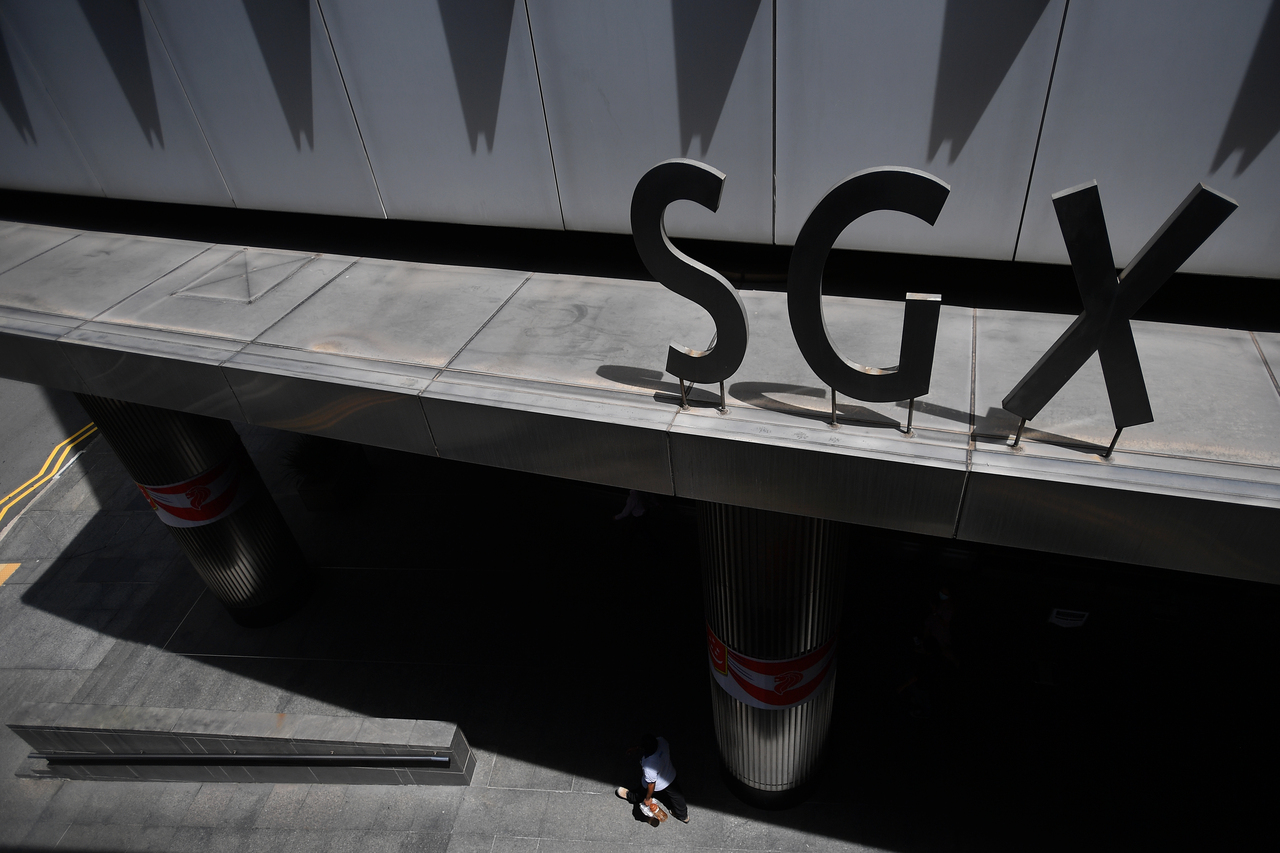Market Watch
More upside to equities, aided by ample liquidity
Sign up now: Get ST's newsletters delivered to your inbox

The STI finished the January-March quarter with an 11.3 per cent gain.
PHOTO: ST FILE
Follow topic:
SINGAPORE - The first quarter has been one of the best in recent memory for the Singapore equity market.
Among 18 biggest global stock benchmarks tracked by Bloomberg, the Straits Times Index (STI) was the second best performer, just behind the Taiwan Stock Exchange weighted index, which generated an 11.8 per cent gain (in Singapore dollar terms).
The STI finished the January-March quarter with an 11.3 per cent gain. But including dividends, total return increased to 11.8 per cent.
This was the STI's strongest first quarter since 2012.
As Mr Geoff Howie, market strategist at the Singapore Exchange noted, the key driver for the STI's performance was the three banks, which together account for 40 per cent of the STI.
"The trio of DBS, OCBC and UOB continued to move in tandem with their global peers, averaging 15.4 per cent gains while recipient to $1.02 billion of net institutional inflows in 1Q21," he pointed out.
The STI's uptrend tracked the upswing on Wall Street, with the Nasdaq, Dow Jones Industrial Average and S&P 500 index reaching for new highs last week as the Joe Biden administration proposed a massive US$2 trillion (S$2.7 trillion) infrastructure funding Bill.
Meanwhile, United States economic numbers confirm that reflation and recovery are under way.
Numbers released last Friday showed a better-than-expected 916,000 new jobs created in March - the most in seven months.
US manufacturing growth also roared ahead last month as the Institute of Supply Management reported last Thursday that its index for national factory activity jumped from 60.8 in February to 64.7 in March, the highest level since December 1983.
So, what next?
Global equities have rallied almost 80 per cent since its trough of March last year.
Mr Hou Wey Fook, chief investment officer at DBS Bank, sees more upside for equities.
"The roll-out of vaccines will break the start-stop cycle of economic lockdowns and reopenings. Coupled with trillions of dollars in fiscal stimulus globally, we are now on track for growth and corporate earnings to normalise," he noted in a report last week.
But analysts are keeping an eye on the potential return of inflation.
Still, the general view is that the markets are well supported by abundant liquidity, discernible economic and corporate recovery, and rising incomes.
"While there is no denying valuations are above historic averages, the abundance of zero-cost liquidity across the world will minimise an imminent market crash," Mr Hou wrote.
Mr Vasu Menon, executive director for investment strategy at OCBC Bank, agrees.
If US Federal Reserve policymakers remain dovish, long bond yields show signs of stability, and US and Chinese economic data on tap this week show further improvement, these should augur well for global stock markets and may fuel more upside, he said.
"Value or cyclical stock which will benefit from the growing focus on the reflation theme could benefit in the coming weeks and perhaps even months as economic recovery gains traction," he added.
However, this does not mean no intermittent pullbacks in the stock markets, he warned. "Occasional corrections are normal and healthy, even in a bull market. They allow markets, which have been on a tear, to catch a breather before resuming their uptrend."
Looking ahead, markets will be keeping a close watch on the minutes of the Fed's policy meeting of March 16-17, which will be released on Wednesday.
This could shed more light on what policymakers said about inflation and if any debate took place about the Fed's quantitative easing programme.
Fed chairman Jerome Powell also takes part in an International Monetary Fund panel discussion on Thursday. Markets will be on the lookout to see if he says anything new about the US economy and monetary policy.

